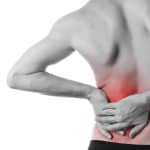Adapted from the June 2005 Special Report, “Treating Chronic Pain,” by the Institute for Integrative Healthcare Studies.
Pain is essential to our survival. The stabbing abdominal pain indicative of appendicitis or the crushing chest sensation during a heart attack prompts us to seek medical attention immediately. While acute pain can be excruciating, it also serves an important purpose. Acute pain is self-limiting and typically resolves following rest and/or appropriate treatment.
When pain persists over an extended period of time its usefulness comes into question, as it no longer serves as a warning of an underlying physical problem, but becomes the problem itself. The definition of chronic pain is pain that lasts for a period of three months or more and has a devastating effect on one’s quality of life. Every aspect of an individual’s being is touched by chronic pain: the physical, emotional, mental and spiritual.
A recent nationwide poll conducted by Stanford University Medical Center, ABC News and USA Today found that more than half of those interviewed suffer from chronic or recurrent pain. Of those surveyed, 25 percent reported back pain as their major disability, while 12 percent reported knee pain as predominant. This translates into more than 11 million Americans being significantly impaired by chronic and recurring pain and more than 2.6 million being permanently disabled by back pain alone. One national survey found that more than 700 million days are lost from work each year because of pain. This translates into a cost of $100 billion annually for disability compensation, attorney’s fees and loss of productivity.
The “gate control theory” of pain was first proposed in 1965 by Canadian psychologist Ronald Melzak and British anatomist Patrick Wall. This theory suggests that there is a gating system located in the central nervous system that opens and closes to either let pain messages through to the brain or to block them. Located at the back of the spinal cord, a structure called the dorsal horn acts as a gateway for all the messages that are trying to pass through to the brain. Once the nerve signals reach the brain, sensory information is processed in the context of one’s mood, state of attention and past experience. As this information is integrated, one’s perception of pain and response to it are influenced. The brain can then send a message back down to close the gate, blocking the reception of new pain signals or to open the gate wider, signaling an intensification of pain.
The pain-spasm-pain cycle is usually seen in cases of chronic pain. Tense or painful areas are often held in a prolonged flexed state. Muscles in prolonged flexion become ischemic (lack of blood and therefore oxygen). Ischemic muscles cause pain. When there is pain the muscle reacts by going into spasm thinking it is protecting itself. This causes more ischemia, pain from the ischemia, and then more spasm. In addition, pain can produce anxiety and thus muscle tension, which eventually produces spasms, causing more pain. This pain-spasm-pain cycle must be broken to stop the perpetuation of chronic pain.
Someone’s emotional state can have a great effect on the pattern of his or her chronic pain. Thoughts and emotions can directly influence physiological responses by stimulating muscle tension, blood flow and levels of brain chemicals that play an important role in the production of pain. If a sense of helplessness prevails, the sense of inner strength to fight against the pain can wane. Faced with painful episodes that are exacerbated from stress and a sense of “loss of control of the pain” and behavioral choices intended to “cope” with the pain, these feelings may unintentionally worsen it and create harmful patterns of coping. For example, someone with chronic low back pain may simply be tired of it and may reach for medication and/or alcohol to numb the pain. To further decrease the pain, they may refrain from certain enjoyable activities in anticipation of more pain. The result of this pattern is loss of muscle strength, tone, flexibility, endurance and the possible development of depression and addiction.
Most pain experts agree that almost all unexplained chronic pain, at least initially, was rooted in a physical problem. Although mental and emotional factors greatly affect pain and our experience of it, they are rarely the root cause of the pain.
Human touch is often a first response to ease our pain. When we hurt somewhere, we are inclined to rub or apply pressure to the area, seeking some relief from the pain. According to the book The Chronic Pain Solution by James N. Dillard, MD, DC, CAc, sensations associated with both pleasure and pain physiologically travel at different speeds along the nervous system. Dull pain, for example, travels at a relatively slow pace along the nerve, from half a mile to two miles per second. Sharp or burning pain can travel at a speed from five to 30 miles per second. The non-painful sensation of touch, including pressure and massage, travels the fastest, from 35 to 75 miles per second. Luckily, the gating mechanism in the spinal cord is triggered by relative speed, and when more than one sensation enters the dorsal horn simultaneously, the fastest one will block the transmission of the slower one.
In the last decade, massage therapy has been the subject of many studies that substantiate its beneficial impact upon the nervous system – the very place where pain resides. Massage has been shown to have a dually beneficial effect on pain: it increases endorphins (our body’s natural painkillers) and depletes substance P (the neurotransmitter that helps communicate pain). The entire nervous system and the brain are positively affected with massage, improving cognitive functioning, reducing stress and battling fatigue with more restful sleep.
Three of the many methods that are excellent to include in the treatment of chronic pain are:
- Myofascial Release: Myofascial Release is a gentle blend of stretching and massage that releases restrictions in the myofascial (muscle and fascial tissue) network. Abnormal pressures may tighten or bind the fascia to underlying tissues, causing adhesions that cling to muscle fibers. These adhesions can stiffen joints or contribute to painful motions. Like a pull in a sweater, the effects of tension and strain can snowball after time. Because fascia links every organ and tissue in the body with every other part, the skillful freeing of tissue that occurs with this technique can be instrumental in chronic pain relief.
- Neuromuscular Therapy: Neuromuscular Therapy (NMT) is a specific and scientific approach to muscular pain relief that brings about balance between the musculoskeletal system and the nervous system. NMT can break the pain-spasm-pain cycle by utilizing pressure on identified trigger points to relieve nerve impulses to the spinal cord. This reduces the intensity of the sympathetic nervous system response and activated injury patterns. This therapy can dramatically affect flexibility, balance and strength by interrupting the pain pathways and improving circulation in and around the affected musculature. The American Academy of Pain Management recognizes this form of massage therapy as an effective treatment for chronic back pain caused by soft tissue injury.
- Aromatherapy: Aromatherapy is moving to the forefront of integrative medicine. This modality can be combined with any other modality and can be either massaged into the skin, inhaled directly or diffused to scent an entire room. Aromatherapy is used for pain relief, tension alleviation, alleviation of fatigue and entire body invigoration. Essential oils that are inhaled in to the lungs influence the limbic system in the brain to offer both psychological and physical benefits. Essential oils applied to the skin are absorbed into the bloodstream and bring that oil’s healing properties to the organs, muscles and joints. The cells of the olfactory membranes in the nasal cavity directly influence the central nervous system, making each breath of the aromatic potentially healing. The many dimensions of suffering that accompany chronic pain, ranging from depression, fatigue, hopelessness and, of course, physical pain, all can be aided by the addition of aromatherapy to a session.
Manual therapies performed by massage therapists can help chronic pain because of their ability to reduce tension and stress, break the pain-spasm-pain cycle, increase endorphins, reduce the transmission of substance P and promote overall health. As the nationwide epidemic of chronic pain is realized, comprehensive pain management programs will continue to emerge. Considering the value a massage therapist can add to the treatment of chronic pain, it won’t be long before pain management centers actively recruit members of our profession that specialize in the debilitating burden of chronic pain.
Recommended Study
Aromatherapy Essentials, Myofascial Release, Neuromuscular Therapy















